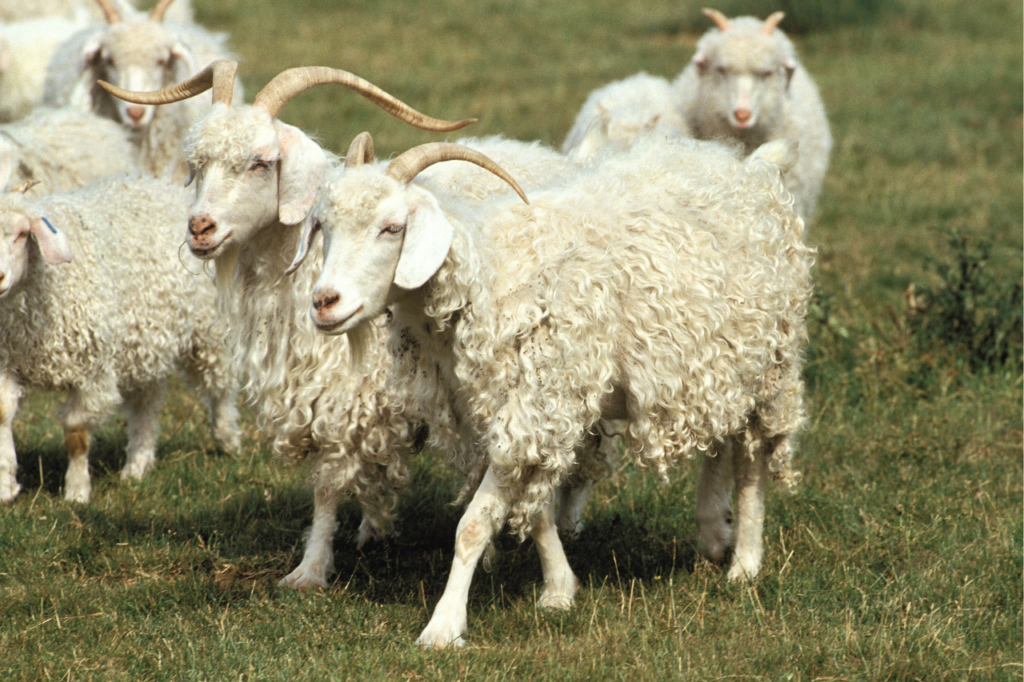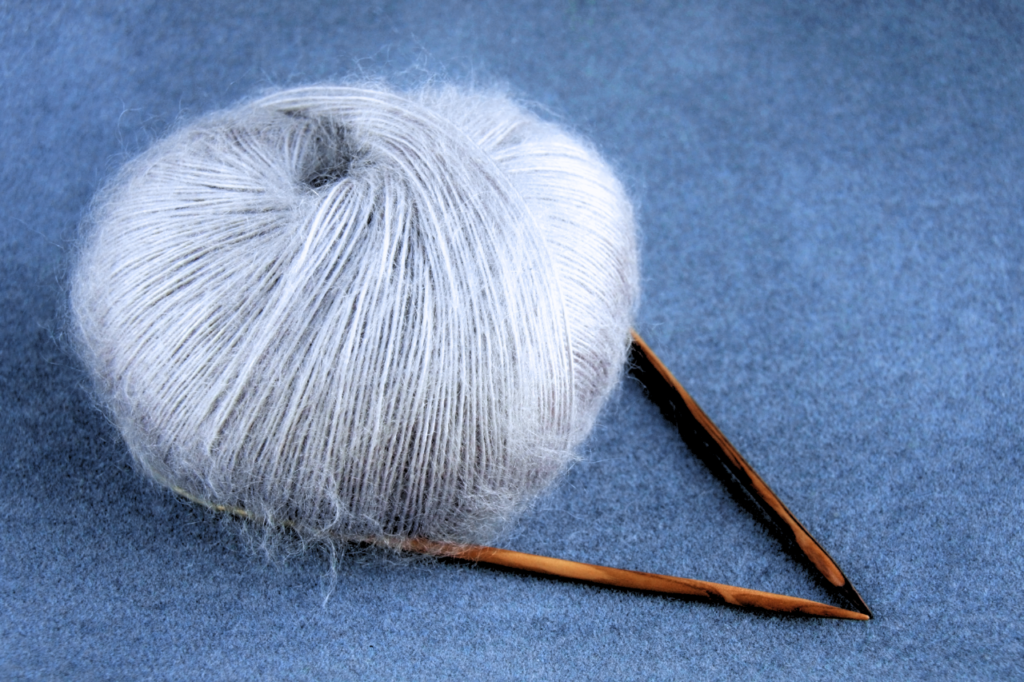
Mohair comes from the fur of the angora goat and is considered one of the oldest textile fibres originating in the mountains of Tibet, where the angora goats originate. The goats were introduced to Turkey in the 17th century and later brought to the United States, South Africa, and England in the 19th century. Today, South Africa is the largest exporter of mohair, with around 50% of the market.

Mohair is a soft and silky fibre, long and warm, and considered one of the most luxurious wool fibres. It is sometimes called the ‘diamond fibre’ because of its high lustre. The white wool has soft, delicate scales on the hairs, giving the fibre its lustre and the property of not tangling like sheep’s wool, for example. The structure also means that mohair easily releases dirt and is not as itchy as sheep’s wool. Mohair is the most durable of all animal fibres and is even stronger than steel of a comparable size. It has high elasticity, is naturally fireproof and is easy to dye.
The quality of the fibres depends on the age of the goats. Younger goats produce softer and finer fibres. This younger wool is mainly used for knitted garments such as sweaters, hats, scarves and mittens. As the animal ages, the thickness of the fibre increases, and the coarser wool is used for coats, rugs, and upholstery.
Angora goats’ fur proliferates, and they are usually clipped twice a year, in spring and autumn. The wool is sheared and then washed and carded before being spun into yarn.
Because of its high price, mohair is often blended with other fibres, especially sheep wool and alpaca, to create lustre, strength and elasticity. Combining it with synthetic fibres such as acrylic is common for economic reasons.

Challenges & Environmental Impacts
Unethical practices occur in the mohair industry. Rough handling to keep animals still during shearing can lead to physical injury. Dehorning and castration without anaesthesia and inferior living conditions are other examples.
There are more responsibly produced mohair, such as wool labelled with the Responsible Wool Standard (RWS) or the Wildlife Friendly Enterprise Network (WFEN). These two organisations certify mohair and claim to consider both the environment and animal rights.
The angora goat are particularly vulnerable to cold and wet weather conditions the month after shearing. A sudden drop in temperature followed by rain can wipe out an entire flock, even in the middle of summer.
Raising goats requires the exploitation of land for the cultivation of their food. According to PETA, producing one kilo of wool takes around 40 kilos of feed. Mohair wool can be made without chemicals, except for some dyeing techniques. The wool is then biodegradable.
It is also worth mentioning that angora wool does not come from angora goats but from angora rabbits.
Sources
Farmer´s weekly – Farming with Angora goats ![]()
Fashionary – Textilipedia ![]()
Masterclass – Fabric Guide: What Is Mohair? ![]()
PETA – What Is Mohair? ![]()
Sewport – What is Mohair Wool Fabric ![]()
Woolbox – Mohair ![]()
Science Direct – Mohair ![]()
November 2024, TÄNKOM | Revised November 2024, RETHINK



